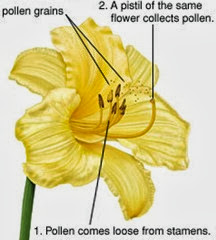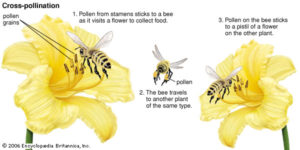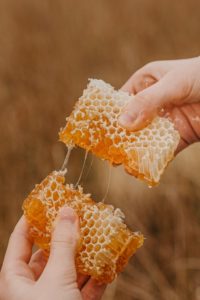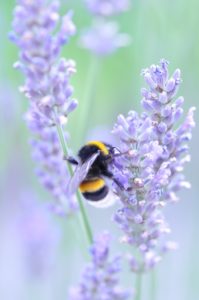Gardener’s Guide: How to Support Bees
In the past year, U.S. beekeepers lost 40 percent of their honeybee colonies despite the fact that Colony Collapse Disorder (CCD), a phenomenon in which worker bees abandon the colony, has declined in the last few years. Research conducted by the Bee Informed Partnership, a nonprofit group led by the University of Maryland, cited climate change as a major cause for bee decline.
According to the group’s entomologists, bee mortality drastically rises during freezing winters when food supplies are scarce. With increasingly warmer winters, bees are able to find more food; however, warmer weather comes with a double-edged sword. Warmer winters create favorable conditions for varroa mites, lethal parasites that researchers believe are contributing to bee mortality. In addition to this, climate change has battered the bees’ natural habitat with forest fires, storms, and other extreme weather events.
The Buzz about Bees
In the United States, honeybees pollinate $15 billion worth of crops, including blueberries; almonds; apples; cherries; and melons.
If you’re thinking,”Well, I don’t like those foods anyway, so who cares?” then you should know that one third of the food you eat depends wholly on bees. Most of the fruits, nuts, vegetables, seeds, and grains we eat depend on pollinators. Eighty-seven percent of all flowering plants depend on a pollinator animal because these plants can’t self-pollinate.
There are two types of pollination in plants: self-pollination and cross-pollination.
Self-pollination occurs when the pollen from the flower’s anther is deposited onto its own stigma. Cross-pollination occurs when pollen is transferred from a flower’s anther to another flower’s stigma by a pollinator animal.


And it’s not just honeybees on whom plants depend. Other pollinators essential to food production and flower reproduction include:
- Bees:
- Leafcutter bees, mason bees, bumblebees, and wild bees
- Insects:
- Butterflies, flies, beetles, and moths
- Birds:
- Hummingbirds, honeyeaters, and sunbirds are the most common; there are actually 2,000 bird species that pollinate flowering plants
- Bats:
- Bats pollinate the flowers that produce avocado, cashews, coconuts, agave, mangoes, cocoa, durian, and guava
But climate change isn’t the only thing killing bees: humans are poisoning them. So if you want to support bees then listen up.
Pollinator Poison
Homeowners have known for years that using pesticides, herbicides, and fertilizers is bad for the environment. We know that runoff pollutes water and kills fish; pesticides poison more than their intended target; and herbicides poison wildlife and can even cause cancer. Yet, equipped with this knowledge, homeowners continue to use these harsh chemicals.
Well, it’s not entirely our fault. A lot of these chemicals are marketed as ecofriendly, natural, and organic, manipulating consumers into believing they’re safe for the environment. One such example is organic fertilizer and pesticides made from copper sulfate.
In The Journal of Entomology, Brazilian scientists conducted experiments on the effects of copper sulfate, an ingredient approved for organic agriculture in the United States. According to the study, when ingested, copper sulfate caused a higher mortality rate in insects than other fertilizers and insecticides tested. The scientists also noted that this fertilizer is notably lethal for Neotropical stingless bees due to its use of heavy metals.
While fertilizer use has proven to harm bees, one of the leading causes of bee mortality is pesticide use. Other reasons for bee mortality include habitat loss; climate change; invasive species; and disease.
So what can we do to support bees? Well, for starters, we can stop using harsh chemicals on our gardens and lawns. There are a lot more ways, however, that we can help support bee populations.
How to Support Bees

For those of you afraid of getting stung, don’t worry! There are many ways you can support bees from the inside of your home or local market, such as:
- Buying locally-made honey and beeswax products, such as soaps, lotions, and candles
- Sponsor a hive by donating money to build better homes for bees
- Support bees on social media or through small fundraising events to donate to foundations
And for those of you with a green thumb, you can support bees by building a pollinator garden. Follow the steps below and visit The Honeybee Conservancy for more information:
- Plant flowers that contain pollen (some possess little to no pollen, such as double and hybrid flowers), and plant them closer together so the bees don’t have to use so much energy flying from flower to flower.
- Leave a plot of land open for ground-nesting bees.
- Plants trees, as bees get most of their nectar from them.
- Create a pollinator bath on the ground or using a bird path.
- Build homes for bees using an online guide.
By showing your support, you can help save bees and increase global food security worldwide.
For those of you who use fertilizer in your garden and don’t want to poison bees, we have a solution for this too.
How to Support Bees with xVital
Our nitrate fertilizer is all-natural. Now, I know what you’re thinking: I just warned you not to trust fertilizers that claim to be organic or ecofriendly. You shouldn’t. You should always investigate and understand the science behind a product before using it in the presence of wildlife, so let me explain how it works.
xVital is created using nitrate and ionized water. We use an electromagnetic field instead of salt, which means our fertilizer won’t cause soil salinity, a problem that devastates soil and crops.
Our fertilizer is mixed with water and applied to the soil for plants’ roots to absorb, and because you can measure the exact ratio your plants need, you won’t end up using too much. Over-fertilization causes increases in greenhouse gases and runoff, which leads to nutrient pollution; algae blooms; and fish kills. By using xVital, you won’t contribute to climate change or nutrient pollution.

Finally, xVital is free of chemicals, including heavy metals that poison bees. Therefore, by using xVital on your garden, you can still feed your plants and support the bee population.
For more information on our product, view our About page.
Sources:
US Beekeepers Lost 40% of Honeybee Colonies over Past Year, Survey Finds
Self-Pollination and Cross-Pollination


